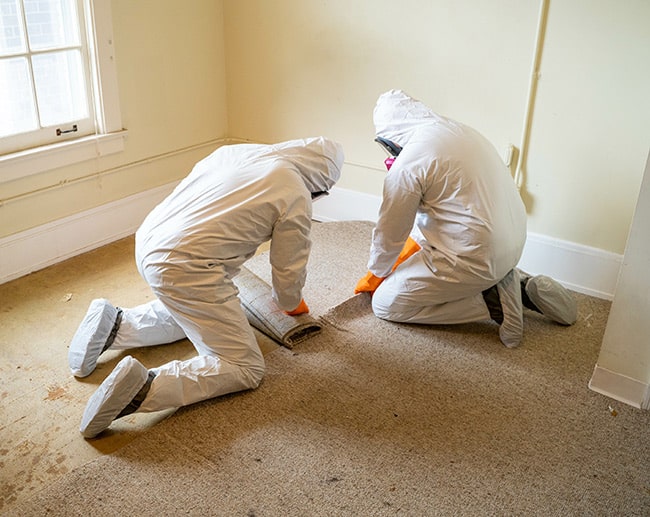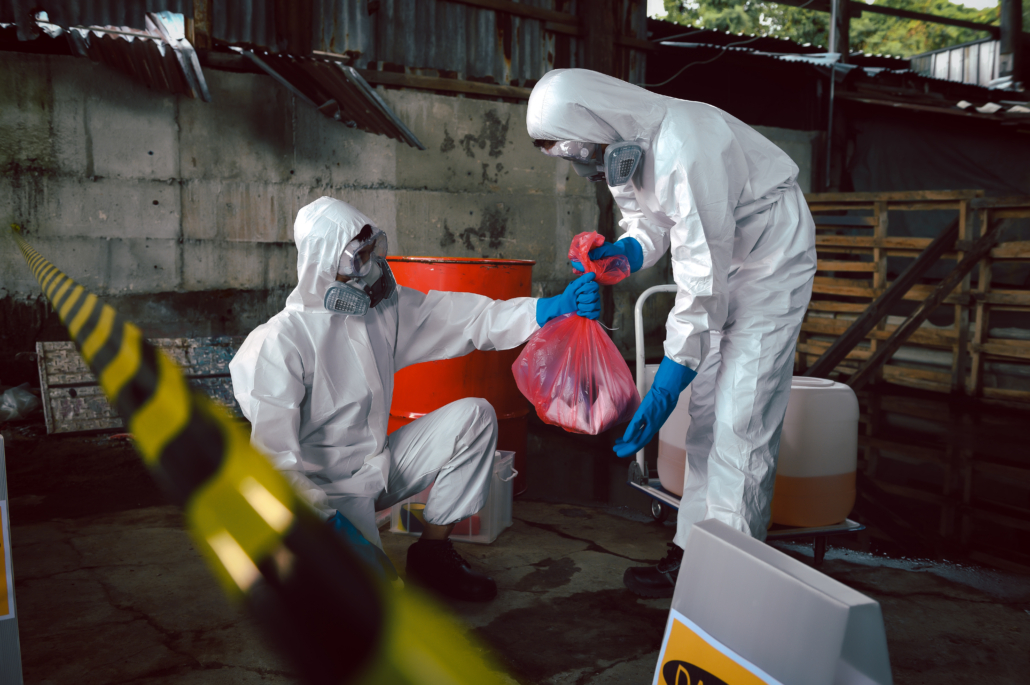Exact ATP Testing for Effective Cleanliness and Hygiene Surveillance
Exact ATP Testing for Effective Cleanliness and Hygiene Surveillance
Blog Article
Professional Biohazard Cleaning and Purification for Blood, Bodily Fluids, and Hazardous Materials
In the realm of biohazard cleansing and decontamination for blood, bodily liquids, and harmful materials, precision and experience are critical. The potential health dangers connected with exposure to biohazards emphasize the critical demand for precise handling and complete cleaning. Specialized training equips experts with the understanding and skills necessary to resolve these harmful circumstances effectively. Nevertheless, it is not simply about tidying up; the relevance of using correct purification techniques can not be overstated. As we browse the intricate landscape of biohazard cleanup, comprehending the nuances of regulations, conformity, and the specialized equipment at play comes to be vital in guaranteeing a comprehensive and safe decontamination process.
Health Dangers of Biohazard Exposure
Direct exposure to biohazards poses considerable health and wellness risks that can lead to extreme consequences for individuals and areas alike. Biohazards encompass a wide variety of biological substances, including blood, physical fluids, mold, germs, infections, and various other possibly transmittable materials. When individuals come into call with these biohazards, whether with mishaps, inappropriate handling, or environmental direct exposure, they deal with the risk of having serious ailments or conditions.
Among the primary health and wellness dangers related to biohazard exposure is the transmission of infectious illness. Bloodborne microorganisms such as HIV, hepatitis B and C, and different germs can be existing in biohazardous materials, posturing a straight danger to human health and wellness. Breathing in air-borne biohazards like mold spores or entering contact with polluted surface areas can also lead to respiratory concerns, allergies, and other adverse health effects.
Furthermore, biohazard exposure can have long-lasting wellness implications, with some diseases showing up years after the initial contact (Blood Cleanup). As a result, it is crucial to focus on appropriate biohazard cleaning and purification to minimize these health risks and ensure the safety of individuals and neighborhoods

Specialized Educating for Biohazard Cleanup
When it comes to taking care of biohazard cleaning successfully and safely, specialized training plays a basic role in making sure appropriate decontamination procedures are followed. Biohazard cleanup requires certain knowledge and abilities to properly reduce threats associated with bloodborne pathogens, bodily liquids, and dangerous materials. Specialists learnt biohazard cleaning go through rigorous direction on exactly how to securely take care of, get rid of, and take care of biohazardous products to avoid contamination and exposure.
Specialized training for biohazard clean-up covers a series of essential topics, consisting of appropriate personal protective devices (PPE) usage, bloodborne microorganism understanding, purification methods, and hazardous waste disposal protocols. People learnt biohazard cleanup are outfitted with the needed proficiency to analyze contamination levels, identify possible dangers, and execute suitable cleanup procedures in compliance with regulative requirements.
Constant training and education and learning are vital in the area of biohazard cleanup to stay updated on the most recent decontamination innovations, safety and security protocols, and laws. By buying specialized training, biohazard cleaning professionals can properly respond to emergency cleanup scenarios and guard both public health and wellness and the setting.
Importance of Proper Decontamination Techniques
Making use of appropriate purification strategies is critical in biohazard cleanup to properly minimize and get rid of dangerous materials health risks. Efficient purification not only ensures the elimination of visible traces of blood, physical fluids, and various other biohazards but also targets unseen virus that may present significant wellness risks otherwise effectively gotten rid of. By adhering to rigorous purification protocols, trained professionals can considerably minimize the danger of direct exposure to harmful bacteria, infections, and germs that can result in conditions or infections.
Proper purification strategies entail the usage of specialized devices and disinfectants that are particularly developed to counteract biohazards properly. Complete cleansing and sanitation of contaminated areas are important to stop the spread of pathogens and guarantee a safe setting for occupants. In addition, the right disposal of biohazardous waste adhering to purification treatments is essential in avoiding contamination of other surfaces or find more individuals.

Tools and Devices for Safe Cleaning
When dealing with blood, bodily fluids, or dangerous materials, biohazard cleansing specialists count on specialized equipment to decrease exposure risks and completely decontaminate the afflicted location. Additionally, biohazard cleaning kits containing disinfectants, absorbent materials, and biohazard bags are made use of to securely consist of and dispose of contaminated products.
Advanced cleansing tools like hospital-grade disinfectants, HEPA-filtered vacuums, and fogging equipments are used to sterilize surfaces and get rid of biohazards properly. Specialized tools such as sharps containers and biohazard waste disposal bins are made use of to securely handle sharp objects and biohazardous waste products. By utilizing the ideal tools and tools, biohazard cleansing professionals can guarantee a complete clean-up process that prioritizes safety and security and lessens wellness threats for both employees and residents of the afflicted space.
Laws and Conformity in Biohazard Cleaning
Proper adherence to policies and conformity standards is vital in biohazard cleaning to ensure the safety and security of both employees and the atmosphere. Government agencies such as OSHA (Occupational Security and Health Management) and the EPA (Epa) have actually developed particular guidelines for biohazard cleanup procedures to reduce health and wellness dangers and ecological contamination. These regulations cover a series of facets consisting of the handling, transport, and disposal of biohazardous products, along with the needed training and safety tools required for personnel associated with the clean-up process.
Biohazard cleansing business have to remain updated with these laws to guarantee that their operations satisfy the needed safety and security criteria. Failing to adhere to these policies can result in severe effects, consisting of fines, lawsuit, and threatening the health of people and the atmosphere. By following rigorous laws and conformity steps, biohazard cleansing business can successfully reduce threats and make certain a secure and thorough cleaning procedure for all events involved.
Conclusion
To conclude, biohazard cleansing great post to read and purification require specialized training, correct techniques, and adherence to policies. Direct exposure to blood, Our site physical liquids, and hazardous materials poses substantial wellness dangers, making it crucial to utilize the best devices and devices for safe clean-up. By following strict procedures and standards, specialists can efficiently reduce the dangers related to biohazard direct exposure and guarantee the safety and security of both themselves and others.
As we browse the complex landscape of biohazard cleaning, comprehending the subtleties of policies, conformity, and the specialized equipment at play ends up being crucial in making certain a secure and comprehensive decontamination process. (Blood Cleanup)
When it comes to taking care of biohazard clean-up successfully and safely, specialized training plays an essential role in guaranteeing proper decontamination procedures are complied with.Using appropriate purification techniques is critical in biohazard cleaning to properly remove dangerous materials and minimize health and wellness dangers. Additionally, biohazard cleansing packages having disinfectants, absorptive products, and biohazard bags are made use of to securely have and dispose of contaminated products.
Federal government companies such as OSHA (Occupational Safety and Wellness Management) and the EPA (Environmental Protection Agency) have actually established specific standards for biohazard cleaning procedures to decrease health dangers and ecological contamination.
Report this page